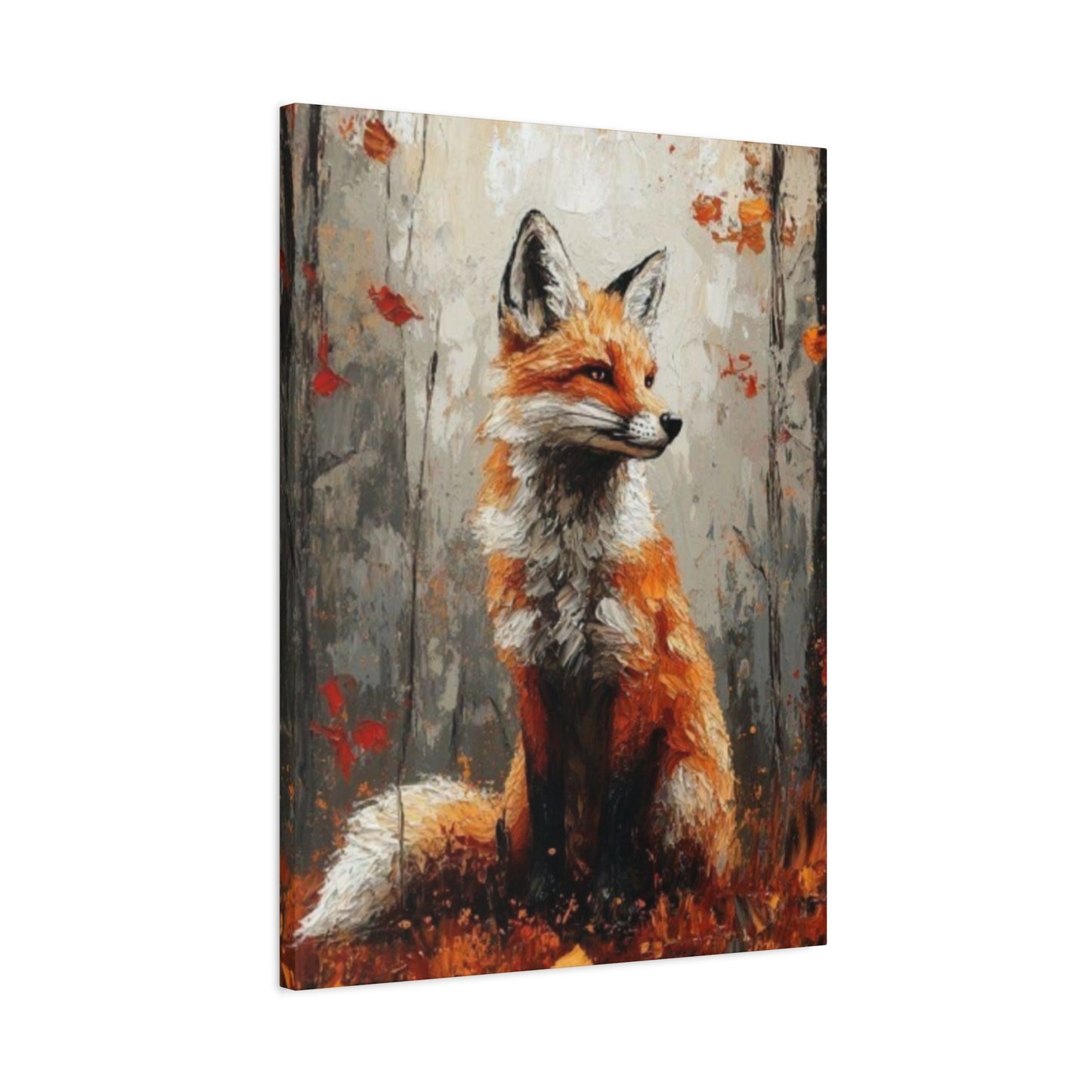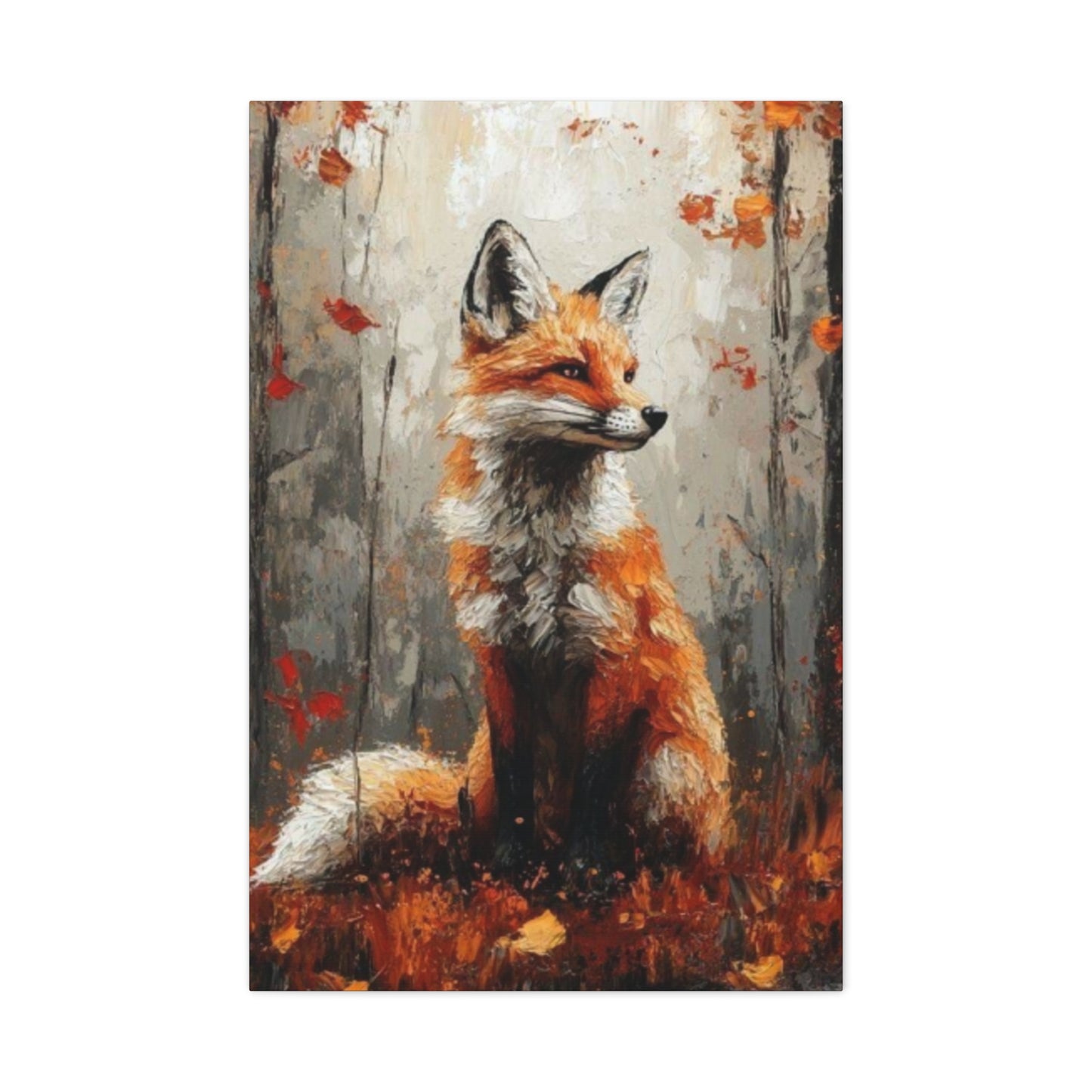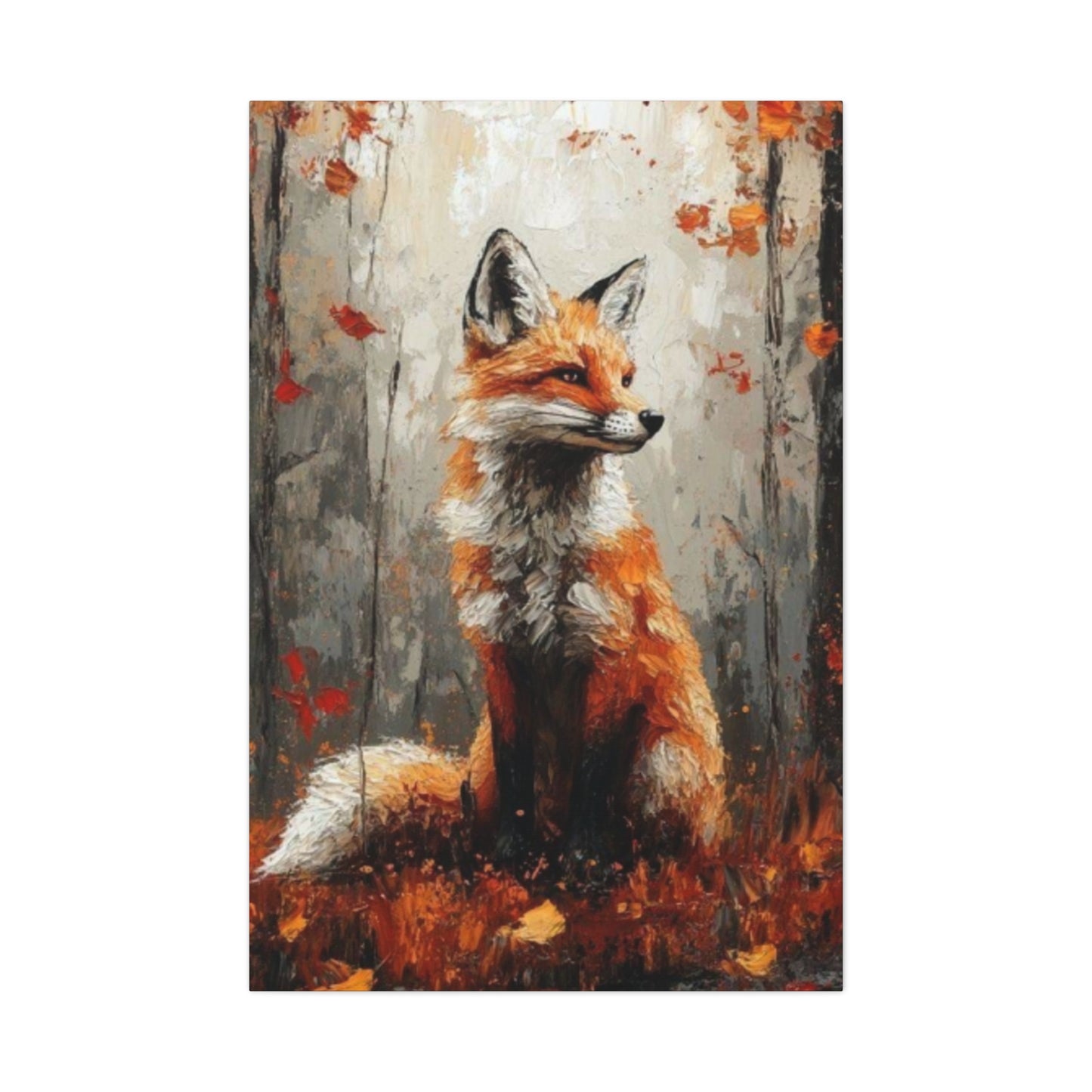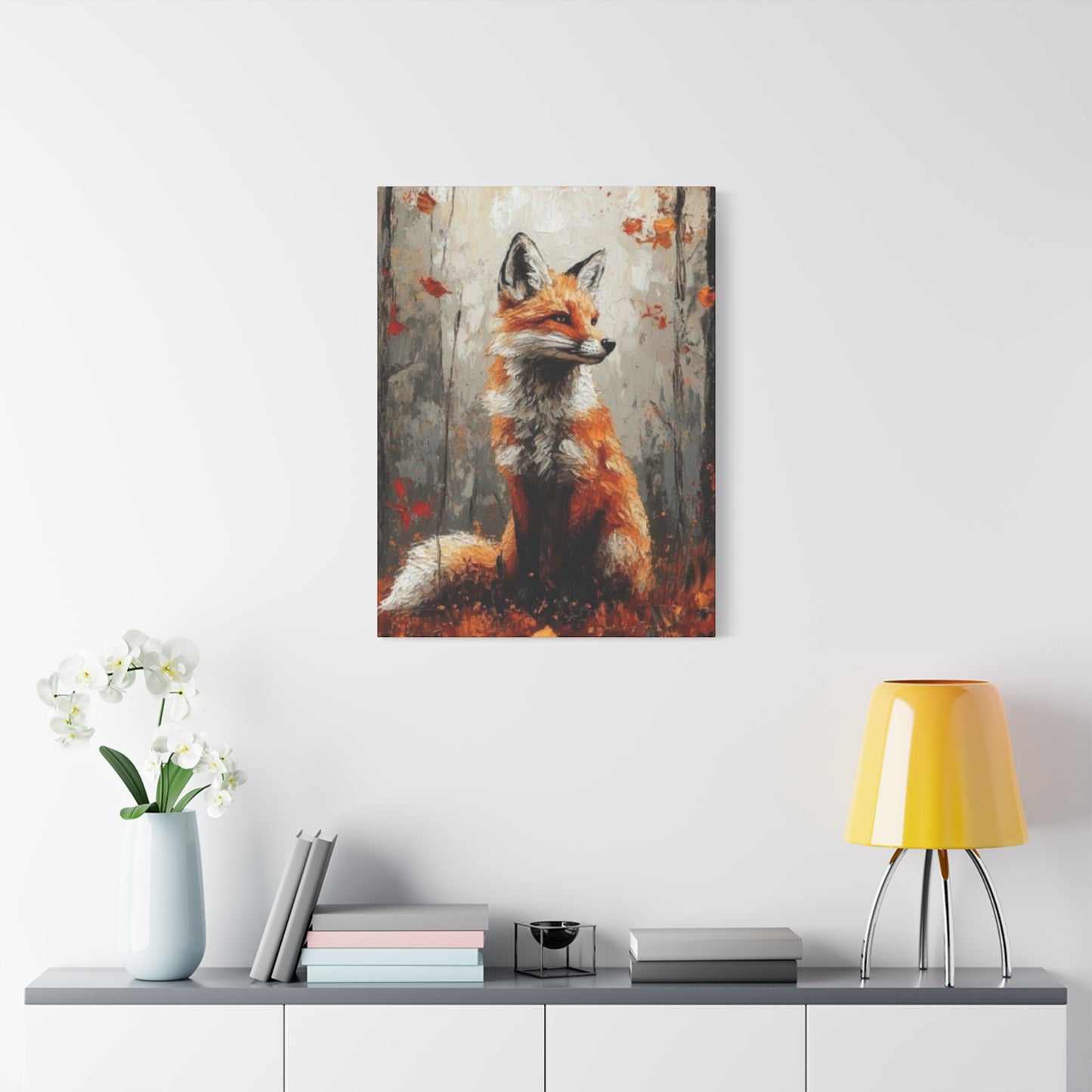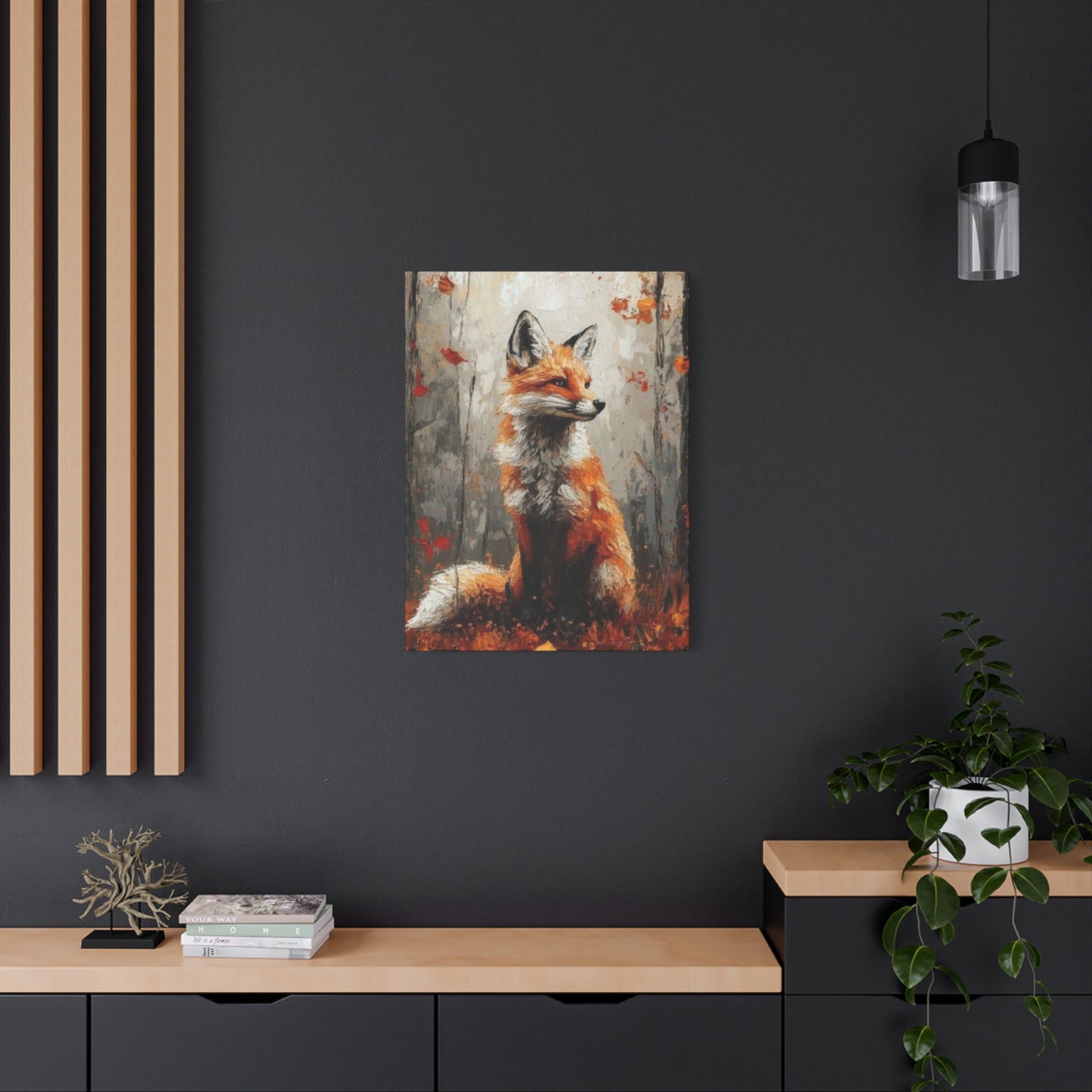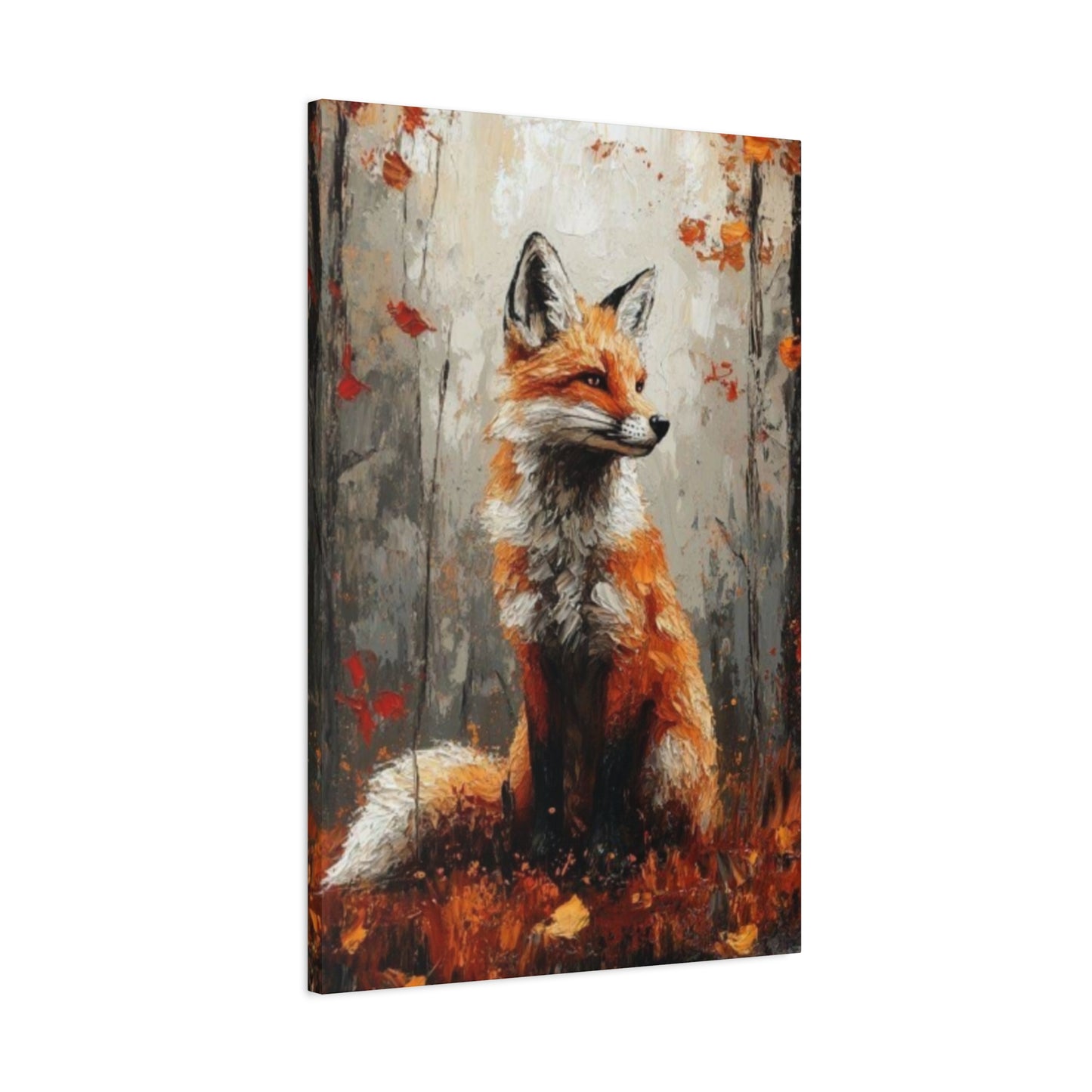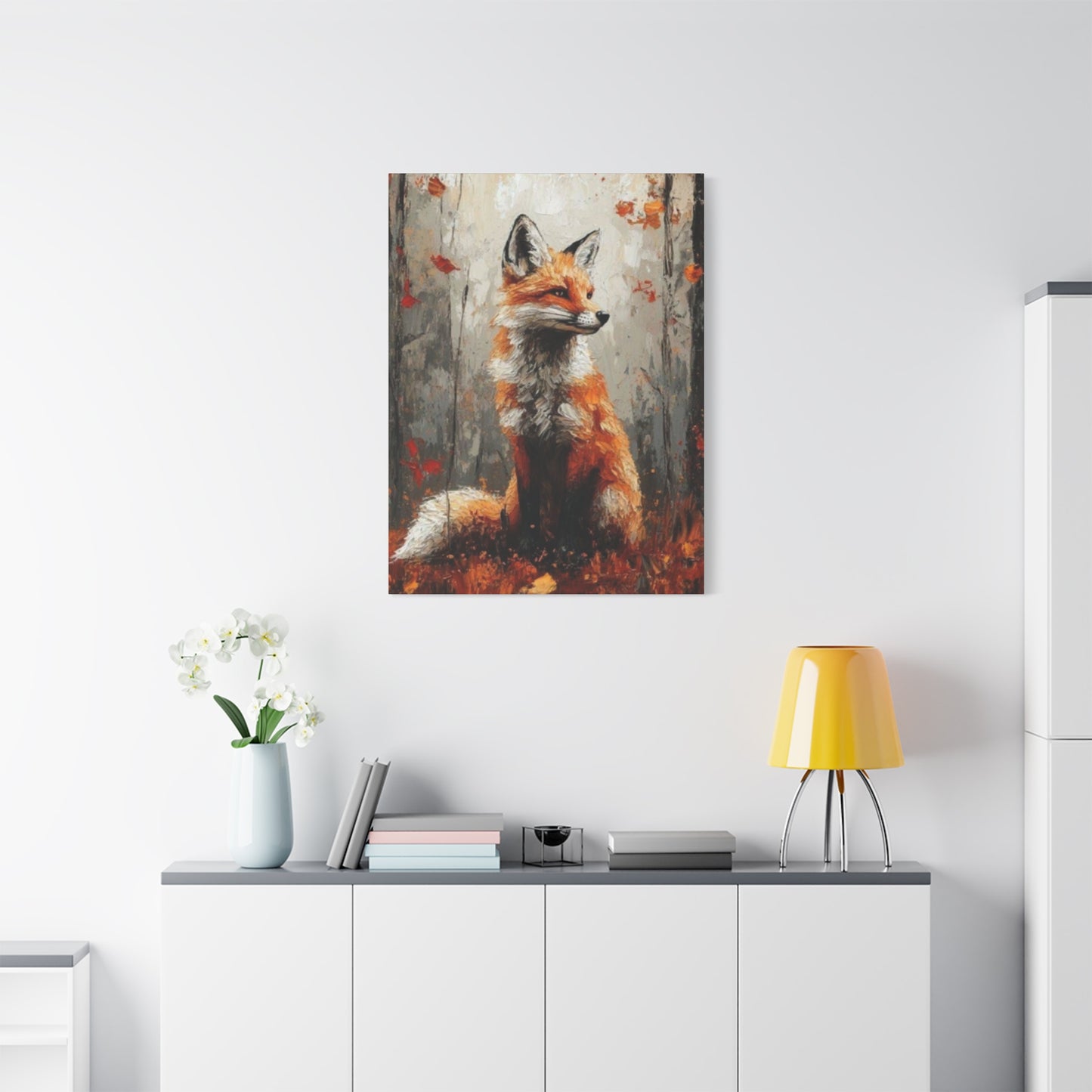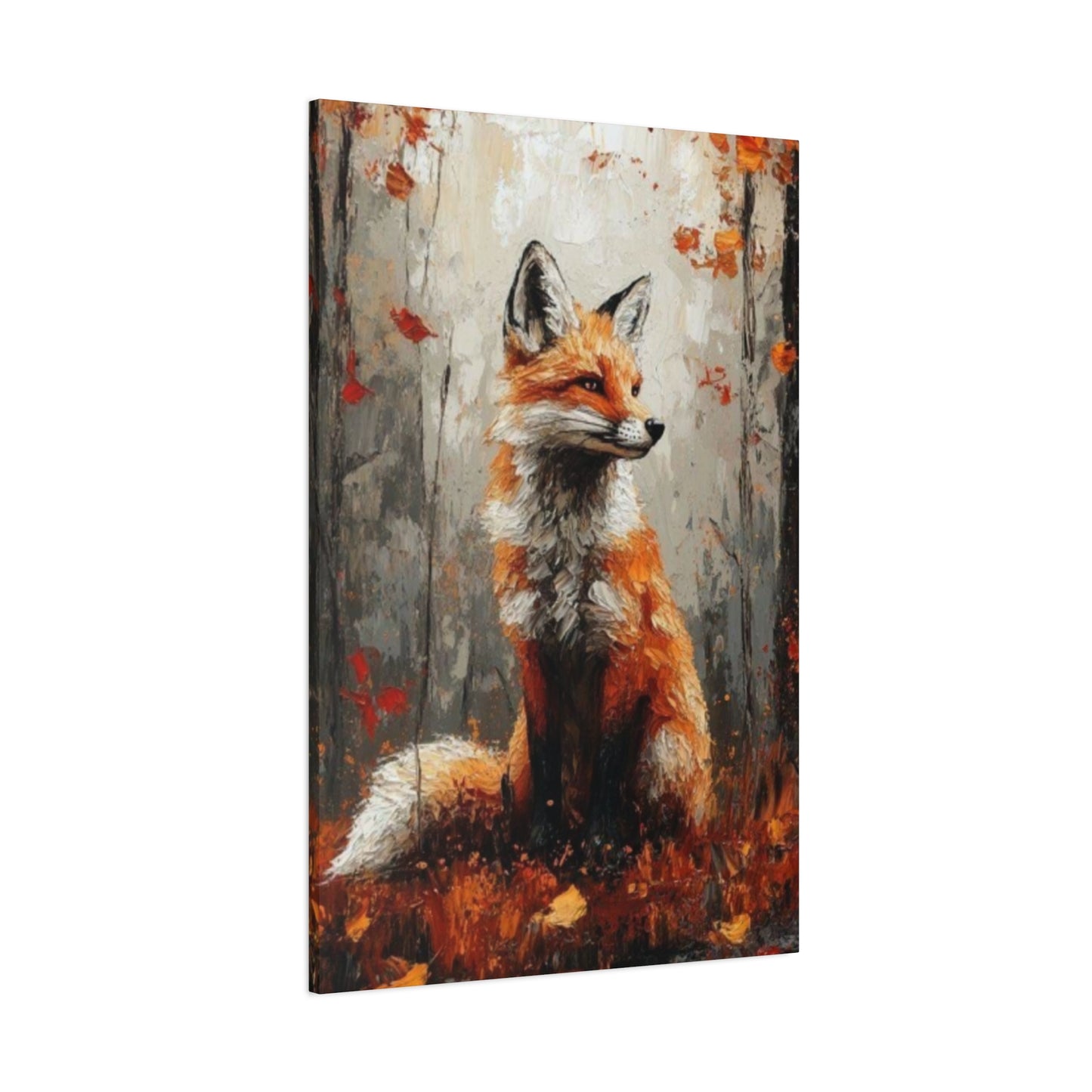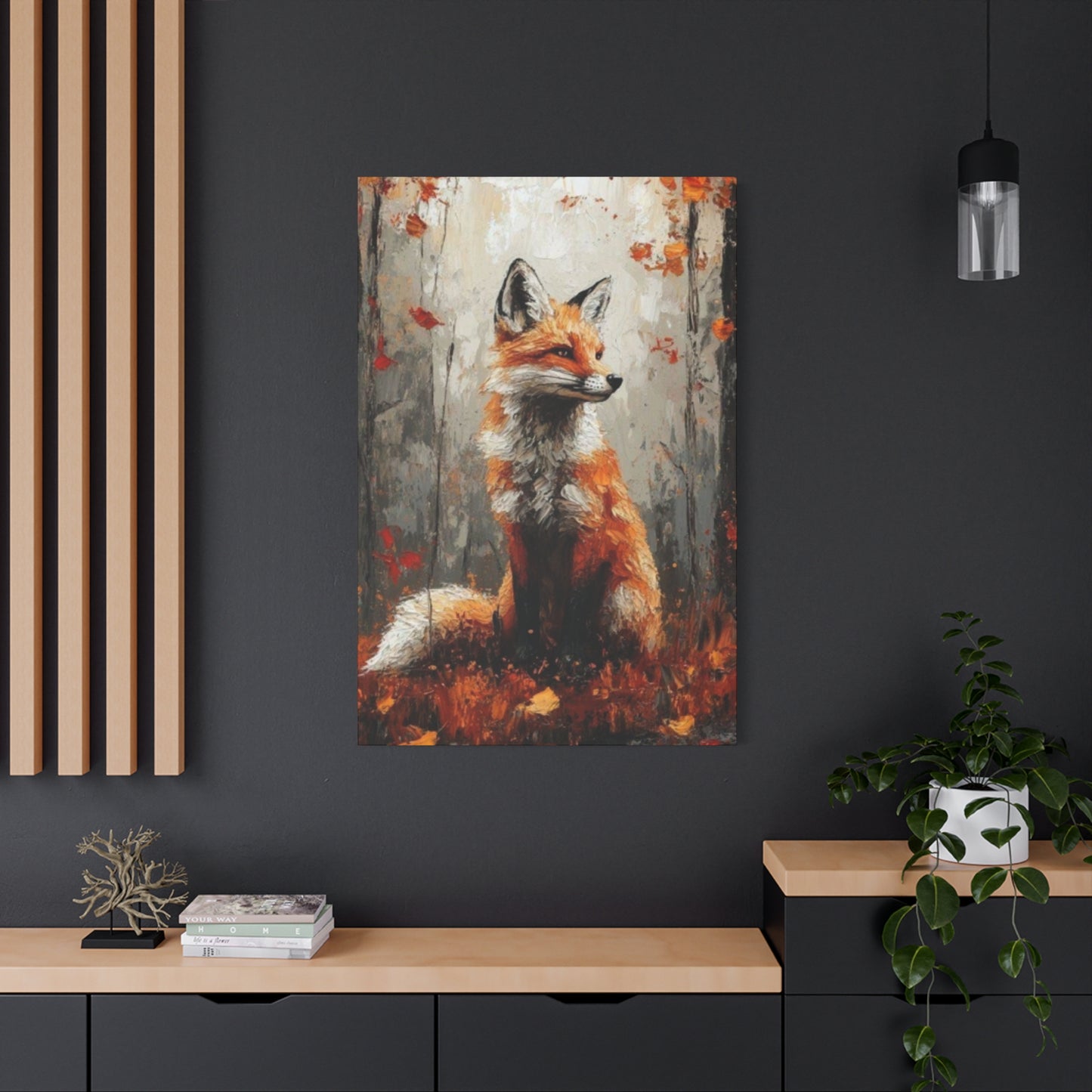Timeless Appeal of Fox Wall Art: Why These Clever Creatures Make Perfect Decor
The world of interior design continuously evolves, bringing fresh perspectives and creative solutions to enhance our living environments. Among the many decorative elements gaining popularity, artwork featuring vibrant orange foxes has emerged as a favorite choice for homeowners seeking to infuse personality, warmth, and natural elegance into their spaces. This distinctive art form bridges the gap between contemporary aesthetics and timeless appeal, offering versatility that adapts to various design philosophies while maintaining its unique character.
Orange fox artwork represents more than just decorative pieces for walls. These captivating images embody the spirit of wilderness, intelligence, and adaptability that foxes symbolize across cultures. The striking orange and red hues characteristic of fox fur create visual interest that draws the eye and serves as a conversation starter. Whether rendered in realistic detail, abstract interpretations, or whimsical illustrations, these pieces bring an element of the natural world indoors, connecting urban dwellers with the beauty of wildlife.
The growing appreciation for this art form stems from multiple factors. Contemporary homeowners increasingly seek meaningful decor that reflects their values and interests. As environmental awareness grows and people yearn for connections with nature, wildlife-inspired artwork has surged in popularity. Fox imagery specifically appeals to those who admire the cleverness, grace, and beauty these animals represent. The warm color palette associated with foxes naturally complements a wide range of interior design schemes, from rustic farmhouse styles to sleek modern aesthetics.
Integrating fox-themed artwork into residential or commercial spaces requires thoughtful consideration of various elements including color coordination, placement, framing choices, and overall design harmony. The flexibility of this decorative approach allows for both subtle incorporation and bold statement-making, depending on personal preferences and existing decor. Understanding how to maximize the impact of these pieces while maintaining balance within a room transforms simple decoration into sophisticated interior design.
Creating Cohesive Designs with Fox-Themed Artwork in Your Home
Incorporating fox-themed artwork into your home requires a strategic approach that considers the overall aesthetic you wish to achieve. The process begins with understanding your existing decor style and identifying how these vibrant pieces can enhance rather than clash with your current setup. Fox artwork offers remarkable versatility, adapting seamlessly to various design philosophies while maintaining its distinctive character.
When working with fox-themed pieces, consider the color palette dominating your space. The natural orange, red, and cream tones found in fox imagery work beautifully with neutral backgrounds such as white, beige, gray, and taupe. These neutral foundations allow the vibrant fox colors to stand out without overwhelming the senses. Alternatively, these pieces can complement deeper, richer tones like forest green, navy blue, or charcoal gray, creating a sophisticated contrast that adds depth to your rooms.
The size and scale of your artwork selection significantly impacts the overall effect. Larger statement pieces work exceptionally well as focal points in spacious living rooms, dining areas, or above fireplace mantels. These commanding works immediately draw attention and set the tone for the entire space. Conversely, smaller pieces can be arranged in gallery walls, combining multiple fox images with complementary nature scenes or abstract works to create a curated collection that tells a visual story.
Texture plays an equally important role in successful integration. Consider how the surface quality of your chosen artwork interacts with other textures in the room. A canvas print with visible brushstrokes adds tactile interest that pairs well with natural materials like wood, leather, and linen. Smooth, glossy finishes suit more contemporary settings featuring metal accents, glass surfaces, and polished furniture. Mixing textures thoughtfully creates visual layers that make spaces feel more dynamic and intentionally designed.
Lighting considerations cannot be overlooked when displaying fox artwork. Natural light enhances the warm tones inherent in fox imagery, making colors appear more vibrant and true to life. However, direct sunlight can cause fading over time, so positioning pieces where they receive indirect natural light proves ideal. Artificial lighting options like picture lights, track lighting, or strategically placed floor lamps can highlight your artwork during evening hours, creating ambiance while showcasing the piece's details.
The relationship between your artwork and surrounding furnishings determines the overall cohesiveness of your design. Pull accent colors from the fox artwork to use in throw pillows, blankets, area rugs, or decorative objects. This color repetition throughout the space creates visual harmony and makes the artwork feel like an integral part of the design rather than an afterthought. Even small touches like incorporating orange-toned candles, pottery, or fresh flowers can reinforce the connection between your artwork and the broader room design.
Consider the emotional atmosphere you want to create. Fox imagery can evoke different moods depending on the artistic style and presentation. Realistic portrayals often bring a sense of majesty and connection to nature, suitable for spaces where you want to inspire contemplation or relaxation. Whimsical, illustrated versions create playful, lighthearted environments perfect for casual living areas or spaces designed for creativity and fun. Abstract or geometric interpretations of foxes suit modern, minimalist spaces where artistic expression takes precedence over literal representation.
The Enchanting Appeal of Fox Imagery in Interior Decoration
Fox imagery holds a special place in decorative arts, captivating homeowners with its unique blend of elegance, wildness, and approachability. Unlike more intimidating wildlife subjects, foxes possess a charm that feels accessible yet sophisticated, making them ideal subjects for residential spaces. Their slender forms, intelligent expressions, and luxurious fur create visually appealing compositions that work across diverse stylistic approaches.
The cultural significance of foxes adds depth to their decorative appeal. Throughout history and across civilizations, foxes have represented various qualities including intelligence, adaptability, cunning, and independence. In Japanese culture, fox spirits called kitsune are revered as magical beings possessing wisdom and special powers. Native American traditions view foxes as symbols of camouflage and discretion. Celtic mythology associates foxes with navigation and guidance through difficult terrain. This rich symbolic heritage gives fox artwork layers of meaning that transcend mere decoration.
The natural color palette of fox fur provides instant warmth to any space. The spectrum of oranges, reds, rusts, and creams found in fox coloring brings inviting, cozy energy to rooms. These hues are scientifically proven to evoke feelings of comfort, enthusiasm, and creativity. Unlike cooler colors that can make spaces feel distant or sterile, the warm tones associated with foxes create environments where people naturally feel more relaxed and welcome. This makes fox artwork particularly valuable in spaces designed for gathering, conversation, and connection.
The seasonal versatility of fox imagery extends its appeal throughout the year. While foxes naturally evoke autumn with their russet coloring, their presence in artwork remains appropriate across all seasons. In spring and summer, fox pieces add grounding earthy tones that balance brighter seasonal decorations. During fall, they complement harvest themes and changing leaf colors perfectly. Winter finds foxes equally at home, as these animals are actually most visible during cold months when their coats are fullest and most vibrant. This year-round appropriateness makes fox artwork a practical investment that never feels out of season.
Fox artwork also appeals to a broad demographic range. Animal lovers naturally gravitate toward these pieces, but the aesthetic qualities attract design enthusiasts who may not consider themselves particularly wildlife-oriented. The sophistication possible in fox portraiture appeals to mature adults seeking refined decor, while illustrated or stylized versions attract younger demographics and families. This cross-generational appeal makes fox artwork an excellent choice for homes with diverse inhabitants or for gift-giving purposes.
The photographic and artistic possibilities of fox subjects contribute to their decorative success. Foxes possess naturally graceful proportions and movements that translate beautifully into two-dimensional art. Their alert, intelligent expressions create engaging focal points that draw viewers in and hold attention. The contrast between their white undersides and colorful backs provides natural compositional interest. Their bushy tails add dynamic shapes that prevent images from feeling static or boring. These inherent visual qualities mean that even simple fox portraits carry substantial aesthetic impact.
The growing availability of fox artwork in various styles and price points has democratized access to this decor trend. From affordable prints and digital downloads to original paintings and limited edition pieces, options exist for every budget and commitment level. This accessibility allows people to experiment with the trend without significant financial risk, while serious collectors can invest in museum-quality works. The range of available options ensures that fox artwork remains accessible to diverse audiences with varying tastes and resources.
Optimal Placement Strategies for Fox-Themed Artwork
Determining where to hang fox-themed artwork significantly influences its impact and how it integrates with your overall design scheme. Strategic placement transforms artwork from mere decoration into a defining element that shapes the character and flow of your spaces. Understanding principles of placement helps ensure your investment in artwork delivers maximum visual and emotional returns.
The living room offers numerous opportunities for showcasing fox artwork. Above the sofa represents the most traditional and often most effective placement option. This position naturally draws the eye as people enter the room and provides a focal point for seating arrangements. When hanging artwork above a sofa, aim for the piece or arrangement to span approximately two-thirds to three-quarters of the sofa's width. The bottom edge should sit eight to ten inches above the sofa back, creating visual connection without risk of damage from people leaning back. This placement works particularly well with horizontal or square compositions.
Fireplace mantels provide another prime location for fox artwork. The mantel naturally serves as a room's focal point, making it ideal real estate for showcasing meaningful pieces. When placing artwork above a fireplace, consider the mantel depth and any decorative objects displayed there. The artwork should relate to these elements without overcrowding the composition. A vertical or tall piece works well in rooms with high ceilings, drawing the eye upward and emphasizing architectural height. Horizontal pieces suit wider fireplaces and help anchor the visual weight of the hearth.
Dining rooms benefit from artwork that creates conversation and appetite appeal. Fox imagery with its warm tones naturally complements dining experiences. Placement on the wall most visible from the table entrance creates immediate visual interest as guests arrive. Alternatively, positioning artwork on the wall behind the head of the table provides a backdrop for the host while remaining visible to all diners. In formal dining rooms, consider larger single pieces that make bold statements. Casual dining areas can accommodate more playful groupings or illustrated styles.
Bedroom placement requires consideration of the room's intimate nature. Many people prefer calming imagery in bedrooms, and depending on the artistic style, fox artwork can certainly fulfill this role. Realistic nature scenes featuring foxes in peaceful settings promote tranquility. Position such pieces where they're visible from the bed, creating a connection with nature as you wake and retire. Above the headboard remains the most common bedroom placement, serving as a visual anchor for the bed. Ensure adequate space between the headboard and artwork, typically five to ten inches, to prevent the piece from feeling cramped or disconnected.
Hallways and entryways offer often underutilized spaces perfect for artwork display. These transitional areas benefit from engaging visuals that create positive first impressions and guide movement through the home. A series of smaller fox images arranged vertically or horizontally can elongate hallways and add visual interest to otherwise plain passages. Entry halls particularly benefit from welcoming imagery that sets the tone for the entire home. A fox piece near the front door serves as both greeting and preview of your interior design sensibility.
Staircases present unique opportunities for creative artwork arrangements. The ascending wall alongside stairs allows for dynamic gallery-style displays. Consider arranging multiple fox pieces of varying sizes in a diagonal pattern that echoes the staircase angle. This creates movement and visual flow that complements the functional purpose of the space. Alternatively, a single large statement piece positioned at the staircase landing serves as a destination focal point, rewarding the climb with visual interest.
Home offices and workspaces benefit from artwork that inspires creativity and focus. Fox imagery, with its associations with cleverness and adaptability, provides appropriate symbolism for productive environments. Position artwork where it's visible from your primary work position but doesn't compete for attention with computer screens. A piece on the wall opposite your desk creates a natural break point for eyes fatigued from screen time, while placement behind your computer provides a pleasant backdrop for video calls.
Bathrooms, often overlooked for artwork, can be transformed with appropriate pieces. Smaller fox prints in moisture-resistant frames add personality to powder rooms and guest bathrooms. The warmth of fox coloring counteracts the often cool, clinical feeling of bathroom fixtures and tiles. Position pieces away from direct water exposure while ensuring they're visible from primary sightlines. Above the toilet, on walls opposite the vanity, or flanking mirrors all work well for bathroom artwork.
Delightful Fox-Themed Artwork for Children's Spaces
Children's rooms present wonderful opportunities for incorporating fox artwork in ways that spark imagination, provide comfort, and grow with the child. Fox imagery appeals to young people across age ranges, from nurseries through teenage years, thanks to its versatility in artistic interpretation and the enduring fascination children have with animals.
For nurseries and infant rooms, fox artwork contributes to creating soothing, engaging environments. Research shows that babies benefit from visual stimulation that isn't overwhelming, and thoughtfully chosen artwork provides this balance. Soft, illustrated fox images in gentle colors promote calmness while providing interesting shapes for developing vision to track and process. Consider artwork featuring sleepy foxes, foxes in natural settings, or family groups that subtly reinforce themes of security and care. Position these pieces where babies can see them from the crib without causing overstimulation during sleep times.
As children transition to toddler years, their interaction with room decor becomes more active and cognitive. Fox artwork during this stage can serve educational purposes while remaining decorative. Pieces that show foxes in different seasons help children understand natural cycles. Artwork depicting foxes engaged in activities like playing or exploring supports social-emotional development by modeling behaviors. The narrative potential of fox images allows parents to create stories around the artwork, turning wall decorations into interactive experiences that promote language development and creativity.
Preschool and early elementary ages bring opportunities for more colorful, whimsical fox interpretations. This developmental stage embraces fantasy and imagination, making illustrated or anthropomorphized fox characters particularly appealing. Artwork featuring foxes in human clothing, foxes as story characters, or foxes in fantastical settings aligns with how children this age process and understand their world. The playful nature of such pieces creates joyful environments that celebrate childhood while providing sophisticated design elements that appeal to adult sensibilities.
For older children and preteens, fox artwork can mature alongside evolving tastes. More realistic nature photography or artistic interpretations suit this age group's developing appreciation for authenticity and complexity. Fox images can connect to interests in wildlife biology, environmental conservation, or photography. Allowing children this age to participate in selecting their fox artwork promotes autonomy and ensures the pieces resonate personally. This investment in their input increases the likelihood they'll continue appreciating the artwork rather than dismissing it as babyish.
Teenage spaces benefit from fox artwork that balances youthful energy with emerging adult sophistication. Abstract interpretations, geometric fox designs, or edgy artistic styles appeal to teen aesthetics while maintaining appropriate content. Fox imagery can connect to personal identity themes like independence, intelligence, and uniqueness that resonate during these formative years. The symbolic associations of foxes provide meaningful content that teens can relate to their own experiences navigating social complexities and discovering their paths.
The educational value of wildlife artwork extends beyond decoration. Fox pieces prompt questions about animal behavior, habitat needs, and ecological relationships. They create opportunities for conversations about biology, geography, and environmental stewardship. Books about foxes can complement the artwork, creating cohesive learning environments. These discussions help children develop connections between visual arts and scientific understanding, promoting interdisciplinary thinking.
Safety considerations remain paramount in children's spaces. Ensure artwork hangs securely with appropriate hardware rated for the weight. Frames should be shatterproof or protected, particularly in rooms with younger children or high activity levels. Position pieces high enough to prevent young children from reaching and potentially pulling them down. As children grow and gain mobility, reassess placement to maintain safety while keeping artwork visible and engaging.
The flexibility to change and update fox artwork as children grow represents a practical advantage. Starting with affordable prints allows for guilt-free replacement as tastes evolve. Creating a gallery wall with interchangeable pieces lets you update individual images without completely redoing the space. This adaptability ensures children's rooms remain age-appropriate and personally meaningful throughout different developmental stages.
Harmonizing Fox Artwork with Nature-Focused Interior Design
Nature-inspired interior design has emerged as one of the most enduring and appealing approaches to creating living spaces. This philosophy, often called biophilic design, recognizes humans' innate connection to the natural world and seeks to bring outdoor elements inside. Fox artwork naturally complements this approach, serving as a bridge between indoor comfort and outdoor wilderness.
The foundation of nature-inspired interiors rests on using organic materials, natural colors, and imagery that evokes the outdoors. Fox artwork fulfills multiple roles within this framework. As wildlife imagery, it directly references the natural world, creating visual connections to forests, meadows, and wild landscapes. The earth-toned palette of fox fur harmonizes perfectly with the wood, stone, and plant-based materials common in nature-focused spaces. This color coordination occurs almost effortlessly, as the oranges, browns, and creams of foxes mirror autumn leaves, tree bark, and natural fibers.
Layering your fox artwork with botanical elements creates rich, textured environments that feel alive and dynamic. Consider positioning fox pieces near live plants or botanical prints. The combination of wildlife and flora tells a more complete natural story than either element alone. Indoor trees or large potted plants flanking fox artwork create literal and figurative framing that reinforces the outdoor connection. Smaller succulents or air plants arranged on shelves near fox images add living texture that complements the static artwork.
Natural light maximization forms a crucial component of biophilic design, and this consideration affects artwork placement. Position fox pieces where they benefit from natural illumination without suffering sun damage. The play of changing daylight across fox images creates dynamic viewing experiences that static artificial lighting cannot replicate. Morning light brings out warmer tones, while afternoon sun creates different shadows and highlights. This natural variation keeps artwork feeling fresh and alive rather than static and unchanging.
Material choices in frames and mounting systems should reinforce natural themes. Wood frames crafted from sustainable sources align with environmental values while providing aesthetic coherence. The grain and tone of wood frames can either match or contrast with furniture woods, creating intentional design relationships. Natural wood in lighter finishes complements Scandinavian and coastal styles, while darker woods suit rustic or traditional approaches. Bamboo frames offer sustainable alternatives with distinctive character. For more modern nature-inspired spaces, simple black metal frames provide definition without competing with the organic subject matter.
Incorporating other natural textures throughout the room strengthens the cohesive nature theme. Jute or sisal rugs, linen curtains, wool throws, and leather furniture all share organic origins that resonate with fox artwork. These materials bring tactile variety while maintaining the natural philosophy. The juxtaposition of smooth leather against textured woven fabrics creates interest similar to how fox artwork's refined imagery contrasts with rustic framing or mounting surfaces.
Stone and mineral elements add another dimension to nature-inspired spaces featuring fox artwork. A stone fireplace surround, granite countertops, or decorative geodes and crystals all reference the earth and complement wildlife imagery. These harder, more permanent natural materials provide grounding weight that balances the lighter, more delicate aspects of nature like the fox itself. The color variations in natural stone often include rust and orange tones that echo fox coloring, creating subtle color harmonies throughout the space.
Water features, whether functional fountains or artistic representations, complete the natural element collection alongside fox artwork. The sound of water adds another sensory dimension to spaces, while the visual movement contrasts with static artwork. Positioning fox pieces where they can be viewed alongside water features creates peaceful vignettes that invite contemplation. The association of foxes with streams and rivers in natural settings makes this pairing feel authentic and intentional.
Seasonal rotation of complementary decor maintains freshness in nature-inspired spaces. While fox artwork remains constant, surrounding elements can change to reflect current seasons. Spring might bring fresh flowers and lighter textiles. Summer could introduce brighter greens and botanical prints alongside the fox images. Autumn naturally emphasizes the warm tones in fox art with harvest decorations and deeper colors. Winter might add evergreen branches and pinecones that reference the fox's winter habitat. This rotation keeps spaces feeling connected to the natural cycles occurring outside your walls.
Enhancing Fox Artwork Through Strategic Framing Choices
The framing of your fox artwork dramatically influences its presentation and impact. A well-chosen frame elevates artwork from simple decoration to gallery-quality presentation, while poor framing choices can diminish even the most beautiful images. Understanding framing principles helps you make decisions that enhance rather than detract from your fox pieces.
Frame style selection begins with considering your artwork's character and your room's overall aesthetic. Traditional realistic fox paintings or photographs often benefit from classic frame profiles in wood or ornate finishes. These frames honor the artwork's traditional subject matter while adding gravitas and formality. Conversely, contemporary or abstract fox interpretations pair better with simple, clean-lined frames that don't compete for attention. The frame should complement and support the artwork rather than overwhelming or contradicting it.
Color coordination between frame and artwork requires careful thought. Neutral frame colors like black, white, or natural wood work universally, allowing the fox imagery to dominate visually. Black frames provide sharp definition and modern sophistication, making colors appear more vibrant through contrast. White or cream frames create softer, more romantic presentations that suit lighter, airier spaces. Natural wood frames in tones from blonde to espresso offer warmth that harmonizes with the earth tones in fox coloring. For bolder approaches, consider frames that pick up accent colors from the artwork, like deep green to complement forest settings or rust to echo the fox's fur.
Matting serves multiple functions beyond aesthetics. Functionally, mats create space between artwork and glass, preventing moisture damage and allowing air circulation. Aesthetically, mats focus attention on the artwork by providing visual breathing room. For fox images, consider mat colors that appear in the piece but aren't dominant. A cream mat pulls out the fox's lighter chest and facial markings. A soft gray mat complements shadowy backgrounds. A sage green mat emphasizes natural settings. The mat width should relate to both the artwork size and the frame thickness. Larger pieces can support wider mats, while smaller works need proportionally narrower matting to avoid overwhelming the image.
Glass or acrylic glazing protects artwork from dust, moisture, and physical damage. Standard glass works for most applications and costs less than specialty options. However, non-reflective or museum glass eliminates glare that can obscure artwork, particularly in brightly lit spaces or opposite windows. This visibility improvement justifies the additional cost for important pieces or challenging lighting situations. UV-protective glazing prevents fading from sun exposure, crucial for artwork positioned where it receives direct sunlight. Acrylic glazing offers shatter resistance valuable in homes with children or in earthquake-prone regions, though it scratches more easily than glass.
Frame depth considerations become important when working with canvas prints or dimensional artwork. Standard frames suit flat prints and photographs. Deeper frames or floater frames specifically designed for canvas allow the stretched canvas edges to remain visible, creating a contemporary gallery appearance. Shadowbox frames accommodate three-dimensional elements, potentially allowing creative presentations that combine fox artwork with found natural objects like feathers, leaves, or pinecones.
Custom framing versus ready-made frames represents a budget and quality decision. Custom framing allows perfect size matching, unlimited style options, and professional-grade materials and construction. Framers can advise on appropriate treatments for specific pieces and room conditions. However, custom framing costs significantly more than ready-made options. Ready-made frames work well for standard-sized prints and can look quite professional if chosen carefully. Many retailers now offer extensive selections that accommodate various styles and sizes at accessible price points. For budget-conscious approaches, ready-made frames for less important pieces and custom framing for statement works provides balance.
Frameless presentation offers another contemporary option. Mounting prints directly to rigid backing and protecting them with an acrylic face creates sleek, modern presentations that emphasize the artwork itself. This approach particularly suits graphic or photographic fox images with strong compositions that don't need frame definition. Frameless mounting requires careful surface preparation since imperfect walls show more prominently without frames to provide visual separation.
Maintenance considerations influence framing longevity. Quality frames use acid-free materials that won't degrade or discolor artwork over time. Sealed backing prevents dust and insect infiltration. Proper hanging hardware supports the weight safely. Regular dusting maintains appearance, while avoiding harsh cleaners preserves finishes. Periodically checking that artwork remains securely mounted prevents accidents and damage.
Creating Dynamic Spaces with Bold Fox Artwork Displays
Fox artwork offers remarkable opportunities for creating bold, memorable spaces that reflect personality and design confidence. Moving beyond safe, predictable decor choices to embrace more adventurous approaches transforms ordinary rooms into distinctive environments that make lasting impressions. Understanding how to work with bolder fox imagery helps you push boundaries while maintaining sophisticated, intentional design.
Scale represents the most immediate way to create impact. Oversized fox artwork commands attention and establishes clear focal points. A large canvas spanning four, five, or even six feet across becomes the room's star attraction, around which other elements orbit. This approach works particularly well in open-concept spaces where dramatic focal points help define areas within larger volumes. When working with very large pieces, ensure adequate wall space surrounding the artwork. Crowding large images with furniture or accessories diminishes their impact and creates visual chaos. Allow breathing room that lets the artwork dominate its territory.
Color intensity in fox artwork provides another avenue for boldness. While natural fox coloring skews toward warm earth tones, artistic interpretations can push into more vibrant, saturated territories. Artwork featuring intensely orange, red, or even unexpected colors like purple or turquoise creates dramatic statements. These bolder color choices work best in rooms with otherwise neutral palettes where the artwork can truly pop. A brilliantly colored fox piece becomes a room's exclamation point, injecting energy and personality that more subdued choices cannot match.
Multiple piece arrangements create visual complexity and interest. Rather than a single fox image, consider triptychs or larger groupings that work together as cohesive compositions. Three connected panels showing a fox in motion creates narrative and movement. A grid arrangement of nine smaller fox images in various poses or styles makes a substantial statement while maintaining organization and structure. Asymmetrical groupings of different sized pieces create dynamic, modern presentations that feel curated and intentional. When creating multi-piece displays, maintain consistent framing or matting to unify the arrangement despite varied images.
Mixing artistic styles within fox themes adds intellectual interest and visual variety. Combining realistic photography with abstract interpretations, or pairing vintage illustrations with contemporary graphics creates dialogue between pieces. This eclectic approach reflects sophisticated collecting sensibilities and demonstrates confidence in personal taste. However, maintaining some connecting element, whether color palette, subject matter, or framing consistency, prevents the arrangement from feeling random or chaotic. The goal is intentional variety rather than haphazard collection.
Unconventional placement challenges expectations and creates memorable moments. Rather than standard above-the-sofa positioning, consider placing a major fox piece on an unexpected wall. A large fox image on a short wall in an otherwise empty corner creates a destination within the room. Floor-leaning artwork, popular in contemporary design, allows large pieces to rest against walls at floor level rather than hanging. This casual yet intentional approach suits modern, relaxed aesthetics. Hanging artwork lower than traditional height, particularly in spaces where people sit more than stand, improves viewing angles and creates intimate relationships with the art.
Lighting design specifically targeting fox artwork amplifies its impact. Picture lights mounted directly on or above frames highlight details and create dramatic after-dark presentations. Track lighting with adjustable heads allows precise artwork illumination while providing ambient room lighting. Up-lighting from floor-mounted fixtures creates theatrical presentations with dramatic shadows. Colored lighting, used judiciously, can emphasize warm tones in fox images during evening hours, creating cozy, inviting atmospheres. Smart lighting systems enable changing presentations throughout the day, keeping artwork feeling fresh and dynamic.
The interplay between bold artwork and furniture arrangements requires careful choreography. Allow dominant fox pieces to influence furniture positioning rather than forcing artwork into spaces left over after furniture placement. Angle a sofa to face a major fox piece rather than defaulting to parallel wall alignment. Create conversation areas oriented toward artwork, making it part of social spaces rather than mere background. This intentional relationship between furnishings and art elevates both elements.
Embracing negative space supports bold artwork presentations. Resist the urge to fill every wall section or surface with objects. Clean, uncluttered walls surrounding your fox piece allow it to breathe and dominate visually. This restraint particularly matters with already bold colors or large scales. The Japanese concept of ma, roughly translated as negative or empty space, recognizes that emptiness creates the context that allows objects to achieve their full presence. Applied to fox artwork, this means that what you don't hang matters as much as what you do.
Symbolic Meanings and Cultural Significance of Fox Imagery
Understanding the symbolic weight and cultural meanings associated with foxes enriches your appreciation of fox artwork beyond purely aesthetic considerations. Throughout history and across cultures, foxes have captured human imagination, appearing in mythology, folklore, literature, and spiritual traditions. This symbolic heritage adds depth and resonance to fox imagery displayed in contemporary homes.
In Japanese culture, foxes, particularly the mystical kitsune, hold special significance. These supernatural fox spirits are believed to possess intelligence, magical abilities, and long life. Kitsune can take human form and often serve as messengers for Inari, the Shinto deity of rice, fertility, and prosperity. White or golden foxes represent particularly powerful, benevolent spirits. This cultural association makes fox artwork especially meaningful in homes embracing Japanese aesthetic influences or spiritual practices. The presence of fox imagery can symbolize wisdom, prosperity, and spiritual protection.
Native American traditions across various tribes incorporate fox symbolism, though meanings vary by tribal culture. Many traditions view foxes as teachers of camouflage and discretion, representing the ability to observe without being seen. The fox's cunning nature is respected as intelligence and adaptability rather than deception. Some tribes associate foxes with the power of invisibility and the ability to move between physical and spiritual realms. In these contexts, fox artwork can represent wisdom gained through observation, the importance of timing, and respect for boundaries.
Celtic mythology portrays foxes as guide animals through the spiritual forest, helping souls navigate between worlds. The fox's association with the forest connects it to ancient wisdom, natural magic, and the untamed aspects of nature. Celtic traditions honor the fox's intelligence and strategy, viewing these qualities as sacred gifts. For those drawn to Celtic spirituality or heritage, fox artwork can symbolize guidance through life's transitions, connection to ancestral wisdom, and celebration of natural intelligence.
European folklore traditionally characterizes foxes with more ambivalent symbolism. The fox often appears as a trickster figure, clever but potentially untrustworthy. Aesop's fables and medieval bestiaries frequently feature foxes outwitting other animals through cunning rather than strength. However, this traditional view has evolved, with contemporary perspectives appreciating the fox's intelligence without the negative moral judgments. Modern interpretations recognize that the fox's survival strategies represent admirable adaptability and quick thinking rather than moral failings.
In Chinese symbolism, the fox carries complex meanings related to longevity, feminine energy, and transformation. Fox spirits can be beneficent or mischievous, depending on their age and wisdom. The nine-tailed fox represents ultimate power and knowledge, having achieved its nine tails through centuries of cultivation and learning. Chinese fox lore often associates foxes with romantic relationships and seduction, though not always negatively. This symbolism adds layers of meaning to fox artwork in spaces designed to honor Eastern philosophical traditions.
Modern psychological and spiritual interpretations view foxes as representing qualities valuable in contemporary life. The fox symbolizes adaptability to changing circumstances, a crucial skill in rapidly evolving modern society. Intelligence and quick thinking resonate with knowledge-workers and creative professionals. The fox's solitary yet social nature appeals to individuals balancing independence with community connection. In personal development contexts, the fox represents the shadow self, wild nature, or aspects of personality that civilization suppresses but which contain valuable energy and authenticity.
Environmental symbolism connects foxes to ecological awareness and conservation values. As predators playing important roles in ecosystems, foxes represent natural balance and the interconnection of species. Their adaptability to human-altered environments symbolizes nature's resilience even amid development and change. For environmentally conscious individuals, fox artwork can represent commitment to conservation, appreciation for wildlife, and acknowledgment of humanity's responsibility toward other species.
Seasonal associations link foxes particularly to autumn and winter, influencing their symbolic resonance. The fox's luxurious winter coat and increased visibility during cold months connect it to harvest, preparation, and surviving lean times through cleverness and planning. These associations make fox imagery symbolically appropriate for reflecting on cycles, preparation, and resilience. The auburn colors of fox fur echo autumn leaves, connecting fox symbolism to themes of transition, letting go, and natural beauty in change.
Personal meaning ultimately supersedes cultural or traditional symbolism. The significance fox artwork holds for individual owners matters most in residential contexts. Personal encounters with foxes, childhood memories, character identifications, or simply aesthetic appreciation all create valid, meaningful connections. The layered symbolic history of foxes provides rich potential meanings without dictating what any individual's fox artwork must represent. This flexibility allows fox imagery to carry personal significance while connecting to broader cultural conversations.
Integrating Fox Artwork into Contemporary Residential Design
Modern home design encompasses diverse approaches, from stark minimalism to warm mid-century influences to industrial chic. Fox artwork demonstrates remarkable versatility across these varied contemporary styles, adapting to different aesthetics while maintaining its distinctive character. Understanding how fox imagery functions in modern contexts helps ensure successful integration into today's homes.
Minimalist spaces might seem incompatible with decorative artwork, but carefully selected fox pieces can enhance rather than compromise clean aesthetics. The key lies in choosing imagery with strong, simple compositions and restraining quantity. A single fox silhouette in black against white background aligns with minimalist principles while providing a focal point that prevents spaces from feeling sterile. Geometric or line-art fox interpretations suit minimalist sensibilities better than detailed realistic portrayals. Frame choices should emphasize simplicity: thin black or white frames without ornate details or mats. In minimalist contexts, the fox artwork becomes a statement of intention, demonstrating that minimal doesn't mean empty but rather carefully curated.
Mid-century modern design, experiencing continued popularity, pairs beautifully with stylized fox imagery. The mid-century aesthetic values organic forms, warm woods, and nature-inspired patterns, creating natural synergy with wildlife artwork. Vintage-inspired fox illustrations in the style of 1950s and 60s graphics harmonize perfectly with mid-century furniture and color palettes. The warm oranges and teals popular in mid-century design complement fox imagery naturally. Consider fox artwork with geometric or abstract elements that echo the design patterns of the era. Positioning fox pieces alongside iconic mid-century lighting or furniture creates cohesive vintage-modern environments.
Industrial style interiors benefit from fox artwork that bridges the gap between the hard-edged urban aesthetic and softer natural elements. The contrast between raw materials like exposed brick, concrete, and metal with organic wildlife imagery creates dynamic tension that prevents industrial spaces from feeling cold or unwelcoming. Large-scale photographic fox prints with high contrast or even slightly edgy processing suit industrial environments. Simple metal frames or frameless mounting maintains the style's utilitarian character. The fox's association with urban wildlife adapting to human environments makes it particularly appropriate symbolism for industrial urban lofts.
Scandinavian design principles emphasize light, natural materials, and connections to nature, making fox artwork an obvious fit. The Nordic countries' geographic overlap with fox habitats adds authenticity to this pairing. Simple, clean-lined fox illustrations in limited color palettes align with Scandinavian restraint and functionality. Watercolor fox pieces with soft, muted tones suit the Scandinavian preference for understated beauty. Light wood frames complement blonde furniture woods common in Nordic design. The hygge concept of cozy contentment finds expression in fox artwork that brings nature indoors while maintaining serene, uncluttered spaces.
Bohemian or eclectic interiors embrace mix-and-match approaches where fox artwork can play freely alongside diverse influences. These maximalist-leaning spaces allow for multiple fox pieces in varying styles, creating rich visual tapestries. Combining vintage fox illustrations with contemporary abstracts with realistic photography demonstrates the collecting journey and personal taste evolution. Ornate, colorful frames suit bohemian sensibilities. Layering fox artwork with textiles, plants, and cultural artifacts from various traditions creates the intentional chaos characteristic of successful eclectic design.
Conclusion
The timeless appeal of fox wall art lies in its ability to capture the enigmatic charm and wit of one of nature’s most captivating creatures. Through their elusive beauty and clever, mischievous nature, foxes have long been celebrated in folklore, art, and culture, making them the perfect subject for home decor. The cleverness and adaptability of these creatures not only inspire awe but also speak to deeper themes of resilience, intelligence, and the delicate balance between wildness and domesticity.
Fox wall art is not just a decorative choice; it’s a conversation starter and a statement of individuality. The fox, with its fiery orange coat and sharp, knowing eyes, exudes an air of mystery that invites curiosity. Whether depicted in realistic detail or through a more abstract or stylized approach, these artworks bring energy, warmth, and a touch of wild elegance into any room. Their presence on the walls of a home can evoke a sense of playfulness and adventure, while also symbolizing grace and adaptability—traits we often admire in ourselves and others.
Moreover, foxes are creatures that exist both in the wild and on the fringes of human habitation, making them relatable to anyone who has ever balanced the pull of the untamed with the comfort of the familiar. Fox wall art captures this duality beautifully. The fox’s ability to thrive in various environments, its clever survival instincts, and its symbolic association with transformation and cunning, create a multifaceted narrative within the artwork. The fox becomes a mirror to the viewer’s own journey of adaptability, learning, and growth.
The versatility of fox art is another key reason it has such universal appeal. It can seamlessly complement a range of interior styles—from rustic cabins and woodland retreats to modern urban apartments or minimalist spaces. Whether in the form of vibrant, colorful prints or more muted, sophisticated renditions, fox art adapts to the mood of the space, effortlessly blending in while still making a bold statement. This versatility means that fox wall art can resonate with a wide array of tastes, making it an ideal choice for anyone seeking to add a touch of personality and warmth to their environment.
In addition to its aesthetic value, fox wall art also carries a deeper, symbolic meaning for many. In various cultures, foxes are revered as symbols of wit, agility, and resourcefulness, qualities that are highly regarded in today’s fast-paced world. The fox’s cunning and ability to adapt to changing circumstances speaks to our own need for creativity and adaptability in navigating life's challenges. By adorning your home with fox-themed art, you are embracing the spirit of these remarkable creatures—infusing your living space with the message that cleverness, resilience, and curiosity are worth celebrating.
Furthermore, the rich color palette often associated with fox imagery—shades of russet, amber, and gold—imparts a sense of warmth and comfort. These earthy tones bring a grounded, natural feel to any room, helping to create a welcoming, cozy atmosphere. Whether it's a detailed painting, a minimalist line drawing, or a playful illustration, the fox’s radiant colors and expressive features bring life and character to your home, inviting both admiration and reflection.
In conclusion, fox wall art is much more than a simple decorative choice—it is an invitation to connect with nature, celebrate intelligence and adaptability, and infuse your space with a sense of playful elegance. These clever creatures, with their symbolic association to transformation, wit, and resilience, make perfect decor for those who appreciate art that speaks to deeper meanings while enhancing the aesthetic of their surroundings. Whether you’re drawn to their playful nature, their beautiful appearance, or their rich symbolism, fox wall art is a timeless addition to any home that celebrates the beauty of the wild and the cleverness of the creatures that inhabit it.

















